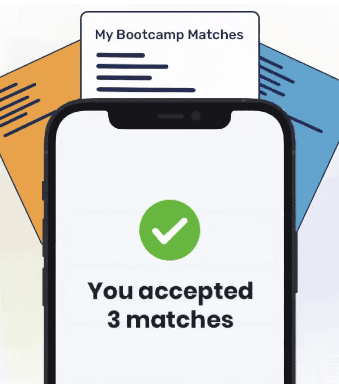Microsoft Excel is a computer program that uses cells to organize, compute, and analyze data through both complex and basic calculations. Excel worksheets come with a variety of formulas, features, and functions that make it possible to sort and calculate large data. If you’re interested in a career in finance, data science, technology, or engineering, knowledge of Excel’s most-used functions is a must.
The best way to build this familiarity is through interactive exercises. Excel can be used for tasks in programming, data entry, data analysis, data tracking, graphing, and charting. These tasks usually require familiarity with features like count functions, pivot tables, VBA macros, and formatting in Excel. In this article, we’ve gathered the best Excel exercises and platforms that offer interactive exercises.
Excel Exercises to Help You Learn Excel
Learning how to use Excel can be great for opening new doors in your career. Building a growing list of advanced beginner-level to advanced-level skills in Excel can make your tasks more productive. The exercises below can help you build your skills.
10 Excel Exercises and Practice Problems
1. Applying Conditional Formatting
Conditional formatting is the process of transforming the layout of cells based on specified conditions. The conditional format is a useful Excel feature that can be used to organize data by highlighting important data cells to make it easier to compare values and create alternatives. To find the conditional format option, go to the home tab of Excel and click on the conditional format button.
2. Selecting a Range of Cells
In Excel, cells refer to the boxes in an Excel worksheet. Each cell has a value attached to it, which shows the positioning of the cell in the column and row of the worksheet. A range refers to a group of cells. Each range of cells comes with a formula representation, like A3:G7. To select a range of cells, use your mouse to hold down a cell and drag it over a group of cells. Click the left side of the mouse to highlight the cells.
3. Creating a Pivot Table
A pivot table is used to sort, organize, and analyze data in rows and columns. This makes it easier to detect and compare data patterns and trends. Pivot data also makes it easy to extract actionable insights from complex data sets. To get started, highlight the cells you need. Then, drag and drop the labeled fields onto the row and value areas.
4. Creating a Formula
A formula is an equation that you use to calculate data in a spreadsheet. To create a formula in Excel, you need to have numerical data to work with. To create a formula in Excel, you start with an equal sign. Next, you include the locations of the cells where the data you want to compute is in, followed by operands and operators. A multiplication formula should look like this: =(B4*C5).
5. Create a Budget in Excel
A budget is a financial plan that contains the estimated income and expense data for a defined period. The purpose of a budget is to help you track your spending and saving habits. Excel is a great tool for tracking your spending. To practice, try creating a budget that automatically tallies your expenses and can be updated over time using the sum function.
To create a budget in Excel, you need to enter your period, income, and expense data into different columns. Drag and highlight your cells to create a table, then create your sum function to total the values in your columns or rows. A sum formula should look something like this: =SUM(C5:H5).
6. Use the IFERROR Function
An IFERROR function in Excel is used to generate an alternative result when an error occurs in a formula. You can use it to specify an alternative value if the formula you’re evaluating results in an error. The syntax for IFERROR is (value, value_if_error). The “value” is the required result that the syntax checks for and the “value_if_error” is the alternative result if the formula evaluates an error.
7. Create a Data Model
A data model arranges and structures data elements such as texts and symbols in a logical order, according to how each element relates to the other. A data model is a visual collection of pivot tables and charts. To construct a data model, you first need a dataset that you can get from external sources. You can create one by importing the tables containing your dataset into Excel. Excel will also automatically create a data model for you.
8. Use VBA Programming to Create Macros
Visual basic application (VBA) is the programming language used in Excel and other Microsoft applications. Macros in Excel are used to automate repetitive tasks or format a result. VBA programming can be used to create macros by recording the keystrokes and clicks of your mouse.
To create your own macros, you have to create an object model, which lets you see the functionalities of an application. From there, write your own VBA code in the Visual Basic Editor.
9. Create a Complex Function
A complex function in Excel is a built-in mathematical function used to convert coefficients into a complex number. The coefficients can be imaginary or real. A complex number takes the form of x + yi or x + yj. The syntax looks like this: COMPLEX(real_num,i_num, [suffix]). The real_num is the real coefficient of the complex number. The i_num is the imaginary coefficient and the suffix for the imaginary coefficient is optional.
10. Use Index and Match to Perform Lookups
Index is an advanced lookup and reference function used in an Excel worksheet to retrieve or make reference to a value in a particular cell range using its numeric position. Match, also a lookup and reference function, is used to find the position of a value in the row. It complements the index function. The index syntax looks like this: =INDEX(array, row_num, [col_num], [area_num]). The match syntax looks like this: =MATCH(“Value”, A3:A6,0).
How to Get Help with Excel

Learning Excel can be overwhelming. There are so many functions and formula essentials to master which is why you should use more than one learning method to simplify your learning. Below are the best methods to help you build your Excel skills.
Excel Exercises
Learning by using exercises is an ideal way to gain knowledge of this software. These exercises are single tasks that help you master Excel features. When choosing Excel exercises, find ones that come with solutions and explanations so you can gain a better understanding of how the features work. Using exercises will help you reduce errors when using Excel for work or personal tasks.
Excel Projects
Projects are sequential tasks that produce a defined result. Excel projects are usually geared towards building multiple skills while producing functional products or services. If you’re a computer programmer, you’ll benefit from completing projects using the visual basic application (VBA). Data analysts will find projects that involve pivot tables useful in building skills in data modeling.
Excel Quizzes
Quizzes are short, timed survey sessions that quantify your knowledge of a particular subject. Excel quizzes are an ideal way to prepare for interviews or measure your learning growth rate. Some Excel training platforms offer challenge quizzes as well as tutorials in addition to their training courses, as a way to assess and reward your competency.
Excel Forums and Blogs
An alternative way to build your knowledge of Excel is by joining forums and subscribing to blogs that offer tutorials and articles geared towards helping Excel students master the software. Forums like MS Office Forums and Chandoo do more than just provide training materials and best practices for Excel. You can find mentorships, training courses, project ideas, and job opportunities by networking in Excel forums.
Where Can I Practice Excel?
Are you looking for where to practice Excel? Below are our picks for the best platforms to find Excel exercises, guides, and practice tests to build your skills and prepare for your next job application.
Websites to Practice Excel
- Excel-Exercise. Excel-Exercise provides detailed walkthroughs and exercises to help interested students learn the program’s various features. It offers students different types of exercises which are categorized into groups. Each group focuses on a particular feature or skill level in Excel. You’ll find exercises in charting, data management, mapping, shortcuts, and pivot tables.
- Excel Practice Online. This is a free practice-based platform for students who want to build their Excel skills. Solutions and explanations accompany each tool and function. There are also exercises for students to practice with, each of which has a different difficulty level. Whether you’re a beginner or an advanced professional, you can benefit from the tutorials and exercises.
- Automate Excel. Automate Excel is full of resources to help students become more competent with Excel. It provides learners with a free downloadable workbook of exercises and lessons and also offers practice exercises that can be done online. These online exercises come with interactive tutorials.
- W3School. This is an ideal platform for programmers and developers who want to learn Excel. W3School offers a wide variety of exercises and solutions to help them learn the software faster. It scores students to measure their knowledge of the software. It also provides learners with tutorials to facilitate the learning process.
- Excel Exercises. Excel Exercises is a platform dedicated to helping beginners become Excel experts through simple training exercises. This platform helps you systematically learn Excel. You’ll find real-time practice tests to help you build consistency and competence.
What’s the Best Way to Learn Excel?
If you’re a beginner, the best way to learn Excel is through a combination of learning approaches. Ensure the methods you choose include mentorship and feedback while providing a fun learning experience. There are several excellent ways to learn Excel. The best method ultimately depends on your learning needs. You may find it easy to learn with training videos, while others prefer more hands-on assessments.
Excel Exercises FAQ
You can practice Excel skills at home through online tutorials, courses, and exercises. These are usually flexible and let you pace it according to your schedule. If you’re interested in learning and practicing Excel online, check out some of the resources in this article.
Generally, employers want candidates who can efficiently use simple to advanced Excel functions and formulas. You should be able to construct tables, sort and filter ranges of data cells, and be able to perform advanced conditional formatting. However, Excel has many uses within many industries, so the skills that employers look for ultimately depend on the job role.
Excel isn’t hard to learn, but mastering it can take time. This is because of the broad range of features and regular updates it comes with. To simplify the learning process, you may need to learn Excel in stages. Start with the simpler and more obvious Excel features. You can learn them through tutorials, courses, and exercises. This article contains some useful resources.
If you already know the basic concepts of Excel, it won’t take you as long to master the software. Becoming proficient in the advanced concepts of Excel may take you a few months of training, but can be shorter with the use of in-depth learning resources. You’ll also need to practice daily if you wish to quickly build more advanced skills.
About us: Career Karma is a platform designed to help job seekers find, research, and connect with job training programs to advance their careers. Learn about the CK publication.

"Career Karma entered my life when I needed it most and quickly helped me match with a bootcamp. Two months after graduating, I found my dream job that aligned with my values and goals in life!"
Venus, Software Engineer at Rockbot



